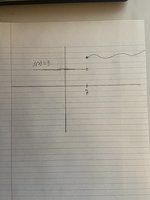Integrate
Junior Member
- Joined
- May 17, 2018
- Messages
- 129
I am having a hard time really understanding the question, but what I am gathering is if the question had said "f(x)=3 for all x GREATER THAN 7" then we would be able to determine f(7) because it is right continuous until it gets to 3? Which 3 would be our value for f(7) in the new condition I created?

